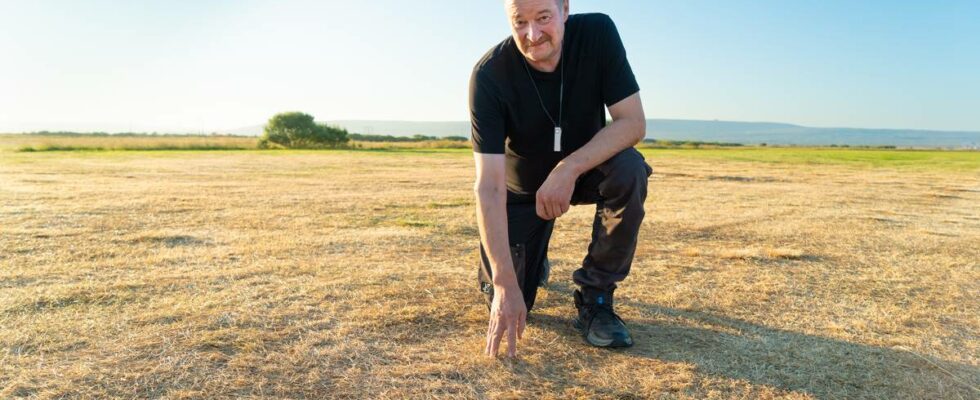– A few days ago, this side was green, says farmer Bjørn Tore Søfting, pointing to the sun-swept field. While most people in Vadsø have enjoyed unusually warm late summer days, Søfting has watched with horror as large fields have gone from green to brown. A few poor raindrops on the night of Monday were not noticeable at all. It has been several weeks since there has been a fairly usable downpour. Bjørn Tore Søfting’s sheep go on soil that has a lot of sand, and which is therefore extra exposed to drought. Photo: Hanne Wilhelms / news Figures from the nearest measuring station show that the wettest 24 hours in the last month was July 28, with just 1.6 millimeters of precipitation. At the same time, the temperature has been up to 28 degrees. – The temperatures are too high, there is too much wind and too much sunlight. Funny to say that from Finnmark, but … Søfting, who is also deputy chairman of the Finnmark Farmers’ Association, believes the drought has destroyed the possibility of mowing the grass one last time. Parts of the plot have more sand than the rest and are particularly susceptible to drought. Photo: Hanne Wilhelms / news – Normally we think that we always get moisture after the month of August, with rain and low pressure, but not this year. The first part of the summer, on the other hand, was at its wettest, so the first mowing yielded less than normal. All in all, Søfting expects to be left with two thirds of a normal crop. Ruined pastures The drought affects not only the fields that are mowed, but also the plants that the sheep graze on in the open fields. It is completely dry almost everywhere. On the map showing the risk of forest fires, almost all of Finnmark glows fiery red. – It is one thing that we have poor growth on the fields, but the pastures also seem to be drying out. So it will also be a big challenge, says Lise Skreddernes, leader of Finnmark Bondelag. – The weather has been fine for a long time. And that is of course positive for many, but for us farmers it is very demanding now. Lise Skreddernes heads Finnmark Bondelag, where many now have a tough job of getting enough feed for the animals. Photo: Lise Kaldahl Skreddernes She sees some local variations and a little more rainfall in the west county. All in all, it’s still bad. – It doesn’t look good to get a hit here, so to speak. According to Skreddernes, it was pretty good until the first mowing – for most around mid-July. – Our main task in the summer is to get enough feed for the animals through the winter. When the growing conditions are as bad as they are now, there is a lot of stress, says the farmers’ association leader. The grass should be green and lush, but it looks more like hay. Photo: Hanne Wilhelms / news – Extreme drought State meteorologist Eirik Samuelsen says that it was wetter than normal in June, while it was drier than normal in July and August. – There has been a lot of heat, we have had a stable high pressure that has been north-east of us. It has caused extreme drought in many places in northern Norway, and especially in eastern Finnmark, says Samuelsen. The tailors are aware that the farmers need rain now. – I just have to apologize for those who wish for nice weather, but now we really wish for rain, she says. – If there was now real rainfall over the whole of Finnmark, would that save this second mowed land? – It would probably save something, but not everything. For what has completely dried out, which is simply brown, it will not correct again. But there is a big difference in how much drought the soil can withstand, and how good the soil is. Rain now had at least saved some of it. Bjørn Tore Søfting expects to get a crop of 1,200 round bales this summer, compared to the normal 1,800. Photo: Hanne Wilhelms / news Up to something Bjørn Tore Søfting says he may have to reduce the number of animals to get through the winter, or buy in feed. But at best he manages with the emergency stock. He was prepared for the vagaries of the weather: – We have always had such a strategy that we have a number of old round balls in stock. Because we never know next year’s season. There is a warehouse with approx. 300 old from last year, as a buffer. – Do you think you will be saved? – Yes, for sure. We must be optimistic. There will hardly be any growth in this area this year, even with rain, the sheep farmer believes. Photo: Hanne Wilhelms / news Published 15.08.2024, at 07.50
ttn-69
Farmers lose large crops after severe summer in Finnmark – news Troms and Finnmark

